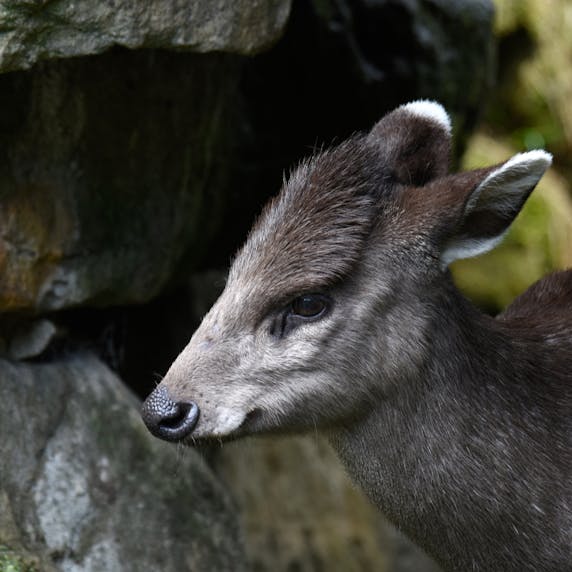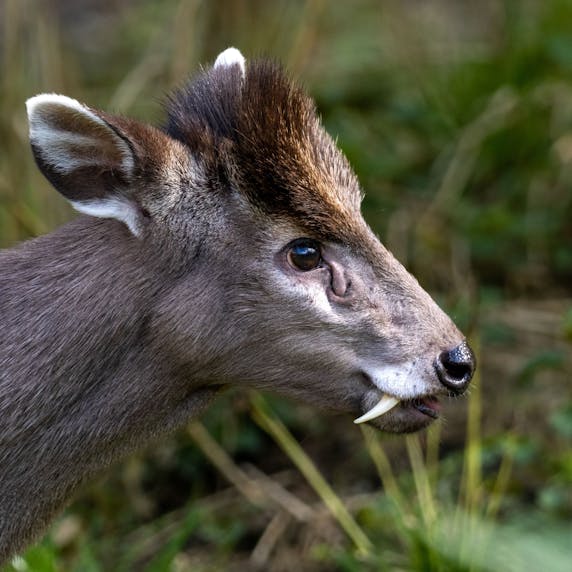
The tufted deer is a small species of deer from China, which is still shrouded in mystery. Because it occurs in an area that is difficult to traverse, it is not entirely certain how many animals remain. However, they are regularly poached for their meat and fur. Also, the forests where the animal occurs are cut down to make room for agriculture and cities. Rotterdam Zoo coordinates the European population management program for this species, with the main goal of maintaining a healthy, diverse population.
Elaphodus cephalophus

about 12 years
50 - 70 centimeters
110 - 160 centimeters
17 - 30 kg
As the name suggests, tufted deer are easily recognized by the tuft in the middle of the forehead, between the small antlers. This tuft grows up to 17 centimeters long. The tufted deer can also be recognized by its tusks, which are especially noticeable in males.
The tufted deer is found in densely forested mountainous areas in central and southern China. The tufted deer used to occur in Myanmar too, but no tufted deer have been sighted there recently. Their habitat has been shrinking due to forestry in areas with increasing construction and agriculture.

The canines on the upper jaw are very large, and can grow to a length of up to 3 centimeters. Both male and female tufted deer have tusks, but in the females they are a lot smaller and therefore barely visible. These tusks are important for male tufted deer because they use them to fight each other for fertile females. This is why male tufted deer also have larger tusks than female deer: the larger the tusks, the greater the chance of mating success.

Tufted deer eat many different types of plants. They often choose young stems and leaves, with lots of protein and less fiber, as these provide the most energy. In doing so, they also eat seeds, which digest poorly and remain in their droppings. This way, the crested deer spreads seeds throughout its habitat, ensuring that different plant species can persist in greater numbers. In doing so, the crested deer not only helps itself; it also benefits other species that depend on these plants and trees. As such, this small animal has a great impact on its natural environment.

Rotterdam Zoo takes the lead in the population management program for the tufted deer, determining which animals are allowed to breed and which aren't. Most participating zoos pair up these deer, ensuring a steady influx of healthy offspring every year. In the wild, tufted deer are polygynous, meaning a single male can mate with multiple females. In zoos, one male can also visit several females, to continue vital bloodlines.
You'll find the tufted deer in the Chinese Garden and around the Himalaya Rock with red pandas. Just like in their natural habitat, their enclosure is filled with plants, providing them ample cover to hide away in the greenery, out of sight from visitors. Therefore, they may not always be visible.

